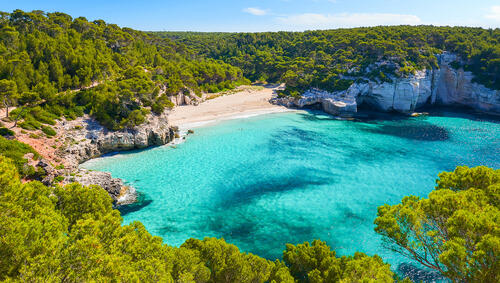If your idea of a heavenly vacation includes lots of sun, sand, and surf then you might be interested in checking out these beaches this year. While there are plenty of beautiful beaches around the world, take a chance this year to visit something a little extra special. From stunning stretches of sand to unique coastlines, these beaches are sure to make your 2024 travel dreams a reality.
Pfeiffer Beach, California, U.S.
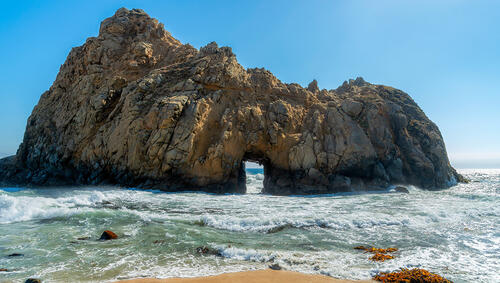
Big Sur in California is famous for its dramatic scenery: craggy headlands, wave-sculpted rock formations and, on closer inspection, tidal rock pools. But the sand at Pfeiffer Beach is also distinctive: it gets its dreamy violet color from the manganese garnet that has been carried by the creek to the ocean’s edge. Come in winter if you hope to witness a Californian sunset through the gap in Keyhole Rock, a phenomenon that only happens this time of the year. The region's rough surf isn't safe for swimming, but a nice beach walk allows you to feel the salt on your skin and the breeze on your face. Though the stretch of Highway 1 known as Paul’s Slide remains closed, it’s still possible to access Pfeiffer Beach from the north, making it an ideal day trip if you’re staying at Carmel or Monterey.
Binalong Bay, Australia

Tasmania, Australia’s southernmost state, is often overlooked by international tourists. But its eastern coast is one of the most breathtaking places in the country, especially at sunrise. Part of the Bay of Fires, Binalong Bay boasts swathes of ivory sand punctuating an otherwise rocky shore. Secluded Jeanneret Beach and Cosy Corner are often empty of visitors, while Swimcart Beach tends to be more popular with campers. No matter which you choose, the palette of colors is extraordinary, as the turquoise water creates a stunning contrast with the burnt orange lichen that envelopes the granite boulders and faulted rocks along the water’s edge.
Breiðamerkursandur, Iceland
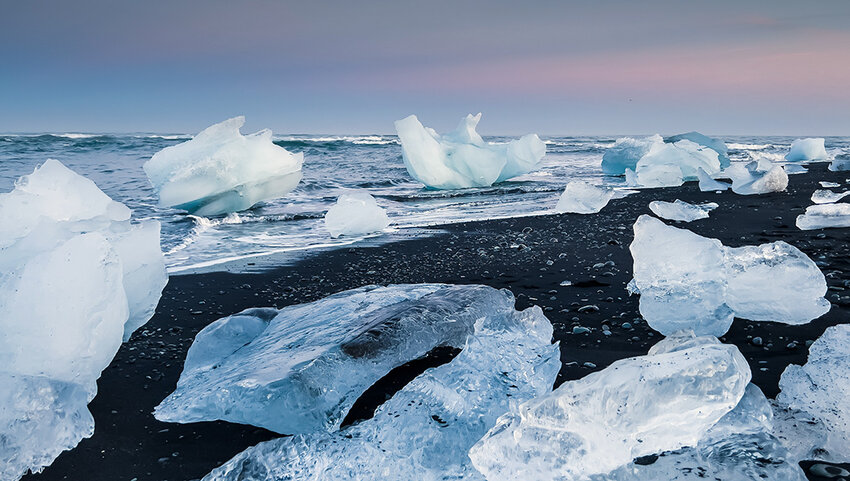
You most likely won’t have heard of Breiðamerkursandur, located on Iceland’s south coast five hours from Reykjavik. Better known as Diamond Beach, it’s one of the most stunning stretches of black sand in Iceland. The reason? Most of the time, the beach is littered with icebergs that calve off the Breiðamerkurjökull glacier, bob around for a bit in Jökulsárlón Glacier Lagoon, and then lazily float out to sea. Atlantic breakers wash the icebergs back onto the shore, sculpting them into natural works of art until the ice slowly dissolves into the sand. It’s an extraordinary sight, guaranteed to leave visiting tourists open-mouthed in awe.
Pig Beach, the Bahamas
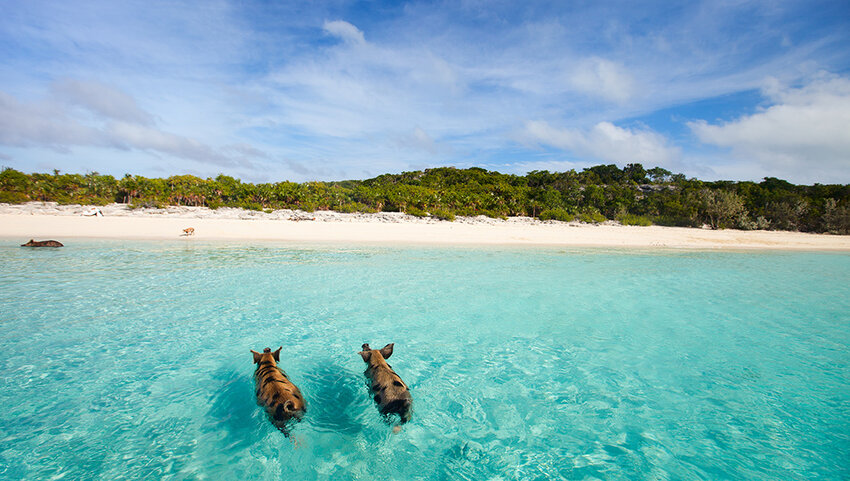
This beach in Exuma, the Bahamas, wouldn't be that much more remarkable than other Caribbean beaches if it weren’t for its unusual residents. Big Major Cay is home to the cutest bunch of pigs that like nothing better than greeting human visitors by swimming out to their boats. No one is quite sure how they came to be here. Theories abound: they were brought here by sailors who forgot to come back and eat them, they survived a shipwreck, or someone simply saw a business opportunity. If this is on your 2024 bucket list, you’ll need to hop on a boat from neighboring Staniel Cay.
Traigh Mhòr, Scotland
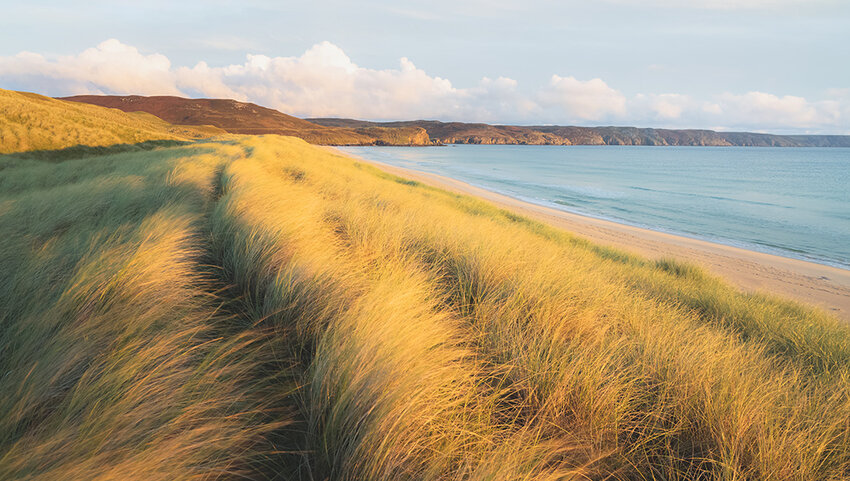
When the sun shines you might remark that the beaches of Scotland’s Outer Hebrides resemble those of the Caribbean, their soft white sand gently ruffled by turquoise waves. The weather’s a little chillier, of course, but there’s something else that sets one of them apart. Traigh Mhòr, located on the island of Barra, doubles as the airport runway – the only place in the world where commercial flights are permitted to land on a public beach. Arriving and departing flights have to be scheduled around the tide, but somehow they make it work. For safety reasons, you won’t be allowed on the beach if the wind sock’s flying and a plane’s due, but it's still worth a visit on a quiet afternoon.
Koekohe Beach, New Zealand

The rocks that litter New Zealand’s Koekohe Beach are no ordinary rocks. These spherical boulders vary in size; the largest weighs several tons and stands around seven feet high. The scientific explanation for their shape is that they formed 65 million years ago and were submerged in mudstone cliffs before being unearthed by wave erosion. The boulders are formed of mud, fine silt, and clay cemented by calcite. Some bear large cracks, the cause of which is unknown. According to Māori legend, however, centuries ago a waka (canoe) called Āraiteuru brought many chiefs to New Zeeland. It wrecked on the rocks and the boulders that we see today are the petrified eel baskets and gourds that washed up on the beach.
Anse Source d’Argent, Seychelles
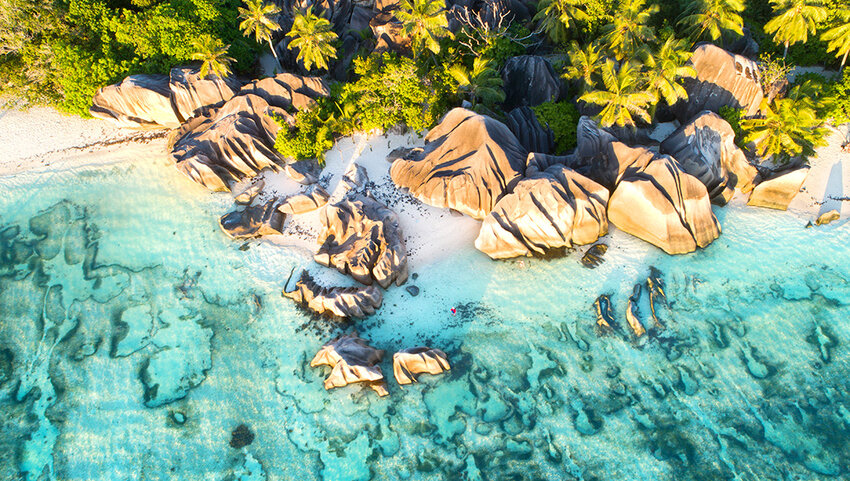
The Indian Ocean isn’t short of incredible beaches, and this one’s no secret. Nevertheless, if you’re planning a vacation to the Seychelles archipelago – and you should – then you’ll want to hop on a boat to La Digue. This laidback island is pretty much vehicle-free, so rent a bicycle on the boat dock and rely on pedal power to get you to La Union estate. Leave your wheels under a shady tree and stroll between giant granite boulders for the last stretch. Anse Source d’Argent has graced countless glossy magazine covers. While even at first light you’re unlikely to have it to yourself, the combination of white sand flanked by wave-sculpted rocks and backed by coconut palms is a must-see.
Trunk Bay, U.S. Virgin Islands
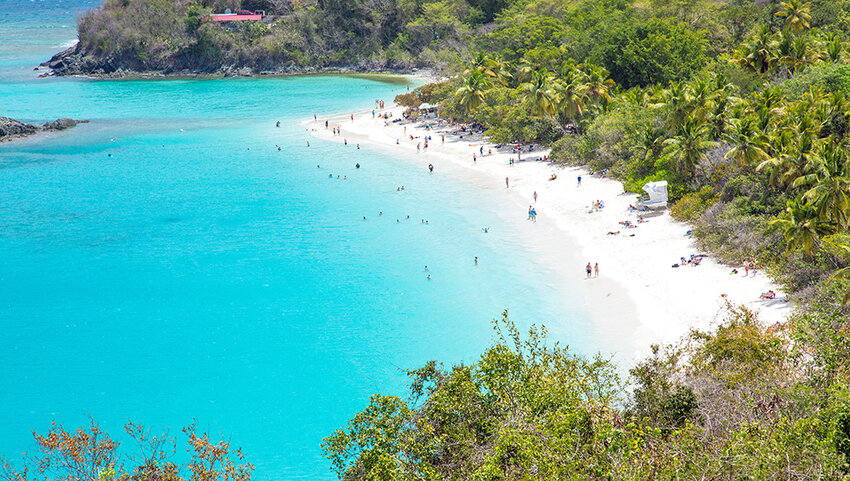
Located on St John, the beach at Trunk Bay is one of the most jaw-droppingly gorgeous in the U.S. Virgin Islands. White sand contrasts photogenically with the bay’s lush vegetation and vivid turquoise sea. But exquisite though the beach undoubtedly is, you need to get into the water to fully appreciate its appeal. Follow the self-guided Underwater Snorkeling Trail to learn about the marine life that inhabit the ocean and its corals. Bright blue tunicates cling to the rocks, while species such as spotted drum, parrotfish, and Atlantic blue tang dart about in the shallow, clear water.
Praia do Sancho, Brazil
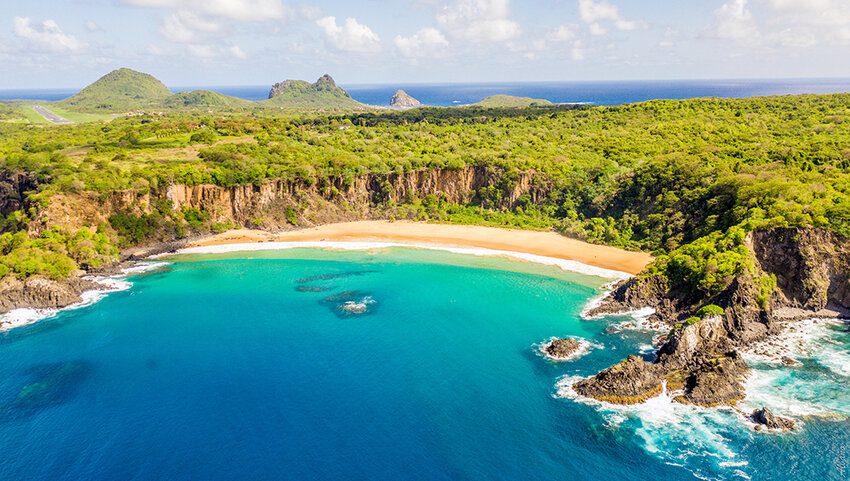
Praia do Sancho is one of the most dazzling beaches in Fernando de Noronha Marine National Park, a UNESCO World Heritage Site located off the coast of Brazil. Visitor numbers are strictly limited and you’ll need to buy a permit in advance if you want to be one of the lucky few allowed to dock. Though you’ll be blown away by the view from above, nothing compares to wriggling your toes into the sand on Sancho beach, except perhaps swimming or snorkeling in its clear, warm water. Access is partially via ladders, but any discomfort from your unconventional arrival will quickly be forgotten once you’re at sea level. Visit between August and December, the island’s dry season, to give yourself the best chance of beach weather.
Skagsanden Beach, Norway
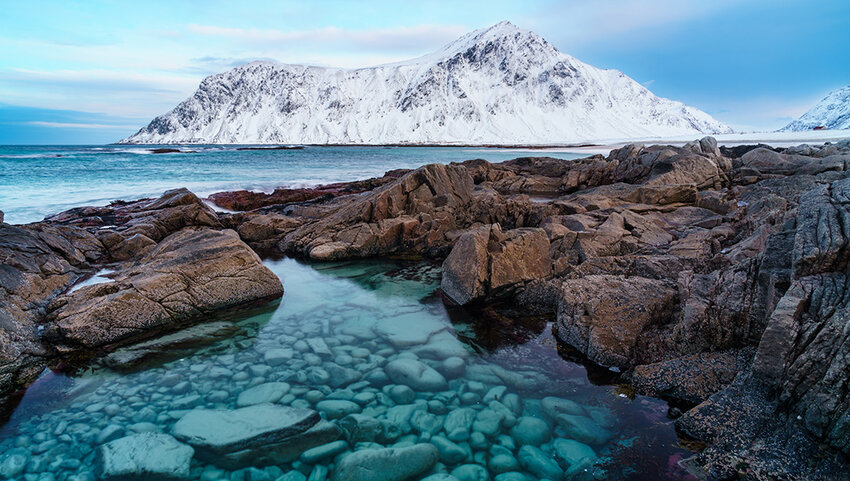
Skagsanden is one of the most spectacular beaches in Norway’s Lofoten archipelago. Surrounded by mountains and fed by a stream that leaves intricate patterns in the wet black and gold sand at low tide, this beach is nothing short of magical. It also faces north, which means from September through March it’s one of the best places in the area to watch for the northern lights as they dance above the snow-capped peaks. Stay the night at Lofoten Beach Camp, which offers seasonal camping pitches or a bed in the Beach House year-round. By day, if the wind’s up, grab yourself a wetsuit and board from the rental kiosk and make the most of the surf. On a calm summer’s day, you might just prefer to picnic on the sand, or order a cocktail from the beach bar as you watch the sun slip below the horizon.
Boulders Beach, South Africa

The African penguin colony on Boulders Beach is only a short drive from Cape Town. Once critically endangered, today there’s a healthy population of around 3,000 birds. As the beach forms part of the Table Mountain National Park Marine Protected Area, the colony should continue to thrive. To the delight of thousands of visitors each year, they waddle about between the granite boulders and rock pools that litter this beach and adjacent Foxy Beach, reached via a wooden boardwalk. Even without the penguins, this attractive beach would be worth a visit, but their amusing antics are the icing on the cake.
Pantai Merah, Indonesia

This photogenic spot on Komodo Island is better known by its nickname, Pink Beach. There are only a handful of pink beaches in the world, making this one pretty special. It gets its color from single-celled organisms called foraminifera, which form part of the reef ecosystem. The crushed shells break down into tiny fragments, which build up to give the beach its unusual appearance. Komodo is an uninhabited island – save for its famous reptiles – so to see this place for yourself, plan to visit for the day. Catch a speedboat from Labuan Bajo on the island of Flores (itself a short flight from Bali) and dock right on the beach. Allow plenty of time to stroll on the beach as well as snorkel or kayak in the shallows to get a different view of the pink sand.
Le Morne, Mauritius
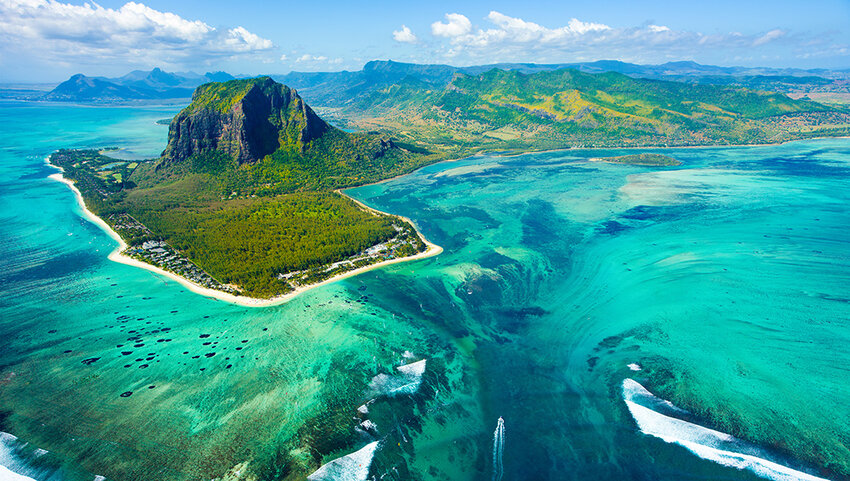
Le Morne beach is located at the southwestern tip of the Indian Ocean island of Mauritius. As backdrops go, this couldn’t get any more salient: this stellar strip of sand is dominated by Le Morne Brabant, the country’s most iconic mountain and a UNESCO World Heritage Site. Kitesurfers know it for One Eye, a legendary wave that takes its name from the appearance of the rock face above. Be sure to book a helicopter or seaplane flightseeing trip too, not only to appreciate the extraordinary landscape from above but also for a chance to see the fabled underwater waterfall just offshore. It’s actually an optical illusion formed as sand tumbles off the steeply shelving ocean floor, but it's impressive nonetheless.
Cala Mitjaneta, Menorca
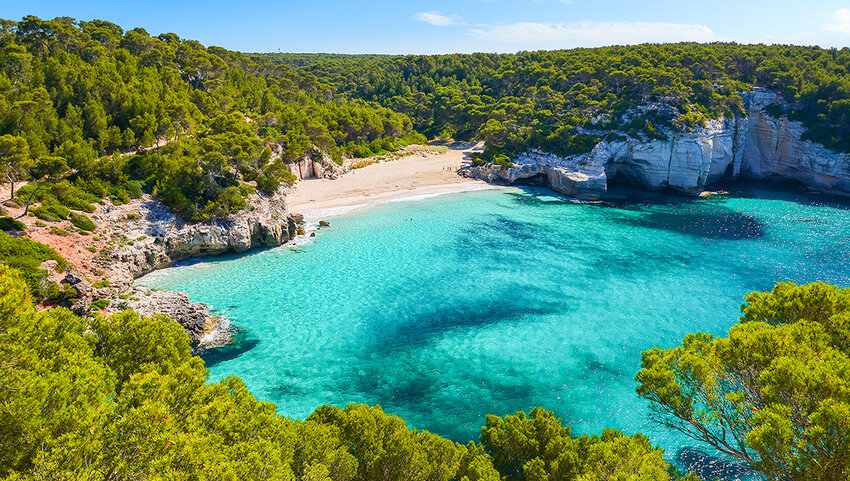
Menorca is the second largest island in Spain’s Balearic islands and boasts a slew of dazzling coves, known locally as calas. Photogenic Cala Mitjaneta is a tiny strip of sand close to the larger Cala Mitjana. Calcareous cliffs and pine forest flank both beaches, contrasting beautifully with the almost impossibly bright turquoise of the sea. There’s no road access; to get here you need to come by boat or on foot. Breathe in the heady scent as you dip into the 115-mile long Camí de Cavalls, a long-distance walking trail that loops the entire island. Timing is everything if your quest to reach the beach is to be successful: the sand is only visible at low tide.
Flamingo Beach, Aruba
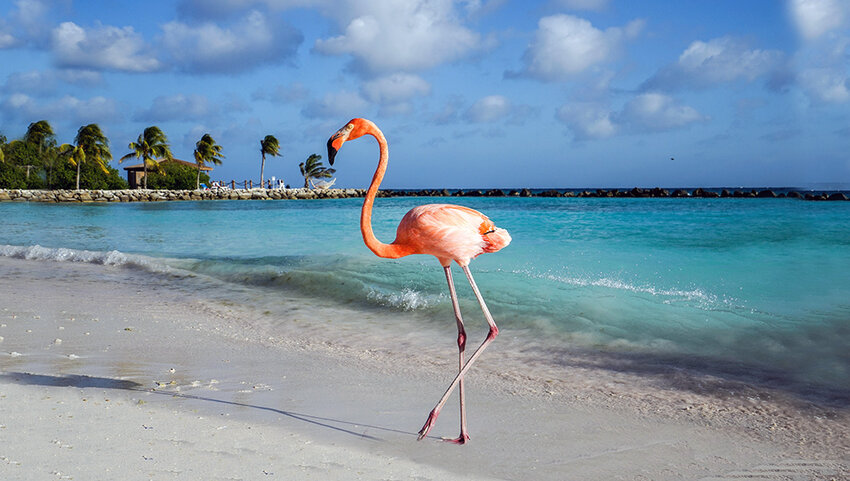
If you travel to Aruba in the southern Caribbean you might find yourself sharing the beach with a flock of flamingos. Guests who opt to stay at the Renaissance Wind Creek hotel in downtown Oranjestad, the island’s capital, have the option of spending their days on a private island. It boasts two pretty beaches, and these quirky pink birds spend their days wandering about in the shallows, ambling along the powdery sand and pottering between the sunbeds. There’s also a sizeable mess of iguanas, which tends to occupy the path leading to the boat dock when it’s nearing feeding time. And don’t worry if you’re booked in somewhere else – a limited number of day passes are available.

